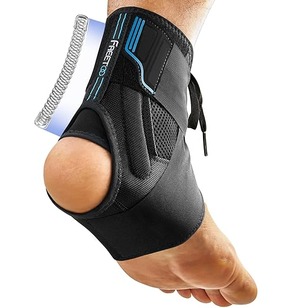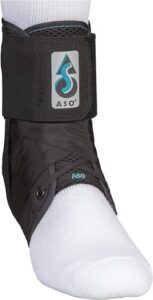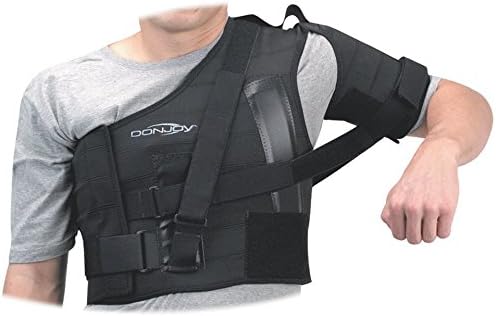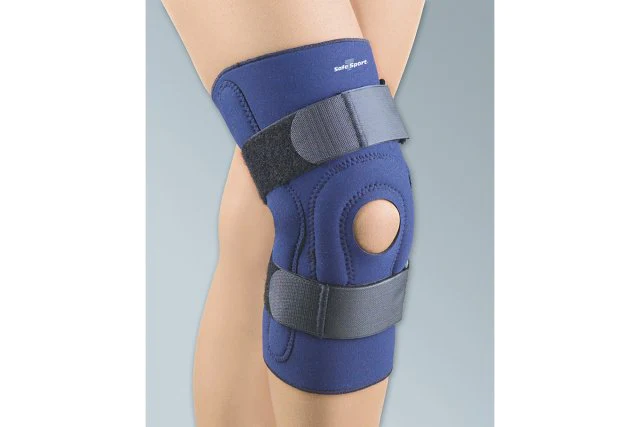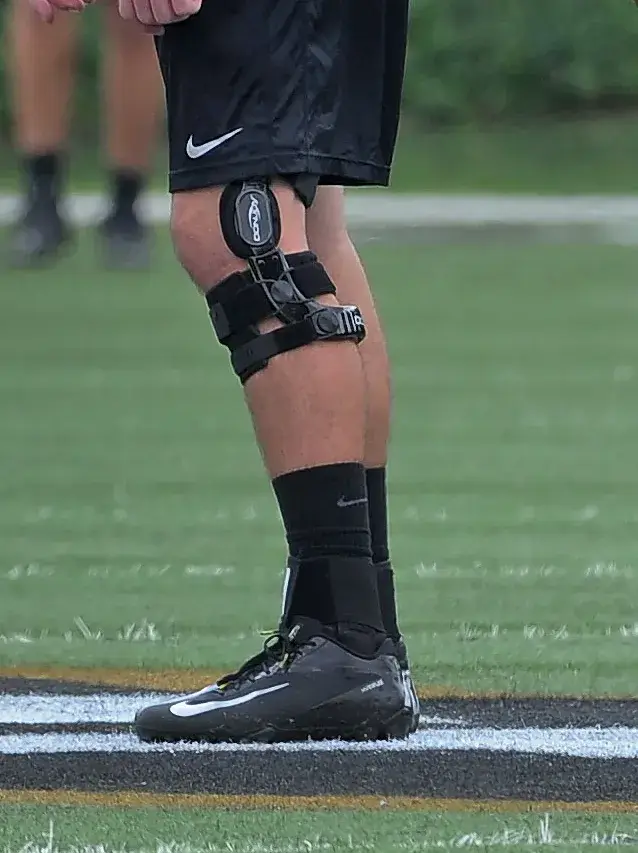Ankle injuries are a common occurrence, and among them, supination is a prevalent issue. Supination refers to the outward rolling motion of the foot, placing excessive stress on the ankle ligaments and increasing the risk of sprains and strains. Fortunately, there is a reliable solution to provide support and stability in such cases: the ankle brace for supination. In this blog, we will delve into the benefits and functionality of ankle braces designed specifically for supination, helping you understand why they are an essential tool for individuals seeking to protect their ankles and maintain an active lifestyle.
3 Best Products of Ankle Brace for Supination
1. Zamst A2-DX Sports Ankle Brace
The Zamst A2-DX Sports Ankle Brace stands out as an excellent choice for addressing supination-related concerns. Crafted with high-quality nylon, this imported ankle brace is specifically designed for individuals dealing with high ankle sprains (Grade III) and chronic ankle instability, effectively reducing both inversion and eversion movements. Notably, its protective guards play a pivotal role in stabilizing the ankle, preventing excessive inward and outward motions. The innovation of the Dual X-Strap Stabilizer sets this brace apart by offering comprehensive three-way support, covering the anterior, lateral, and medial aspects of the lower ankle.
Tailored for each ankle, the Left and Right Specific Design ensures an optimal and secure fit. The Rear Application feature further enhances convenience, allowing for easy application and adjustments. Altogether, the Zamst A2-DX Sports Ankle Brace provides a well-rounded solution for those seeking reliable support in managing supination, combining durability, targeted design, and user-friendly features.
2. Med Spec ASO Ankle Stabilizer
In the realm of addressing concerns related to supination, the Med Spec ASO Ankle Stabilizer stands out as a formidable remedy. Its design, meticulously crafted to afford optimum support and safeguarding, is fabricated from top-tier nylon. The deployment of Stabilizing Straps, intricately forming a complete figure-eight configuration, bestows all-encompassing support to the ankle. Elevating the support game further, the woven elastic cuff closure not only reinforces stability but also adeptly fastens laces and stabilizing straps.
Within its composition, the presence of the CoolFlex Achilles pad and tongue goes beyond ensuring mere comfort; it actively promotes breathability in the course of utilization. The high-caliber nylon boot, a paragon of durability and strength, is tailored to meet the distinctive requirements of individuals grappling with supination challenges. Thanks to its bilateral construct, this stabilizer exhibits adaptability, accommodating both the left and right foot with equal finesse. Moreover, its unobtrusive profile seamlessly integrates with an array of shoe types.
3. FREETOO Ankle Brace
The FREETOO Ankle Brace provides immediate relief for ankle pain and is suitable for both left and right feet. Specifically designed for men, it features a robust metal insert and high-quality polyester that offers substantial support without compromising comfort. The ankle brace maintains proper positioning to alleviate pain stemming from sprains, Achilles issues, tendinitis, or injury recovery. With its unique “8” surround strapping system, incorporating ultra-thin straps, the brace delivers adjustable compression and enhanced stability to effectively reduce inflammation and pain, particularly beneficial for conditions like plantar fasciitis and Achilles tendinitis. Clinically proven to protect against ankle sprains and injuries, it instills confidence in users, ensuring safety during activities on uneven surfaces.
The FREETOO Ankle Brace is easy to wear without requiring a shoe size adjustment, thanks to its ultra-thin and lightweight neoprene construction. Not only is it durable, but its special ergonomic design and ventilated material also prioritize comfort. The product is backed by a 180-day warranty, offering assurance and prompt customer support for a risk-free purchase. This ankle brace is well-suited for individuals dealing with supination issues, providing the necessary support and compression to alleviate pain and enhance stability during various activities.
What is Supination?
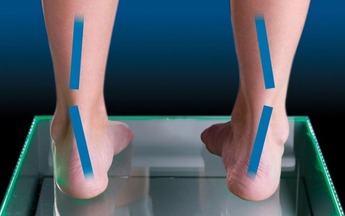
Supination is a term used in anatomy and biomechanics to describe a particular movement of a body part, especially related to the rotation of the forearm or the positioning of the foot. In the context of the foot and ankle, supination refers to the outward rolling motion of the foot during the normal gait cycle. This motion involves the lifting of the inner edge of the foot and the weight bearing on the outer edge.
Ankle supination can sometimes lead to instability and an increased risk of ankle sprains or injuries. An ankle brace is a supportive device designed to provide stability to the ankle joint and control excessive motion, including supination. Here’s how an ankle brace helps with supination:
- Stabilization: Ankle braces are designed to limit excessive movement in the ankle joint. For individuals prone to supination, the brace helps restrict the outward rolling of the foot, reducing the risk of injuries associated with this motion.
- Support: Ankle braces often provide additional support to the ligaments and tendons around the ankle. This is particularly beneficial for individuals with weakened or overstretched ligaments, common in cases of chronic ankle instability.
- Alignment: Ankle braces are constructed to maintain proper alignment of the ankle joint. This alignment is crucial for distributing the forces during walking or running evenly, reducing the strain on specific structures that might be vulnerable to supination-related injuries.
- Compression: Some ankle braces provide compression, which can help reduce swelling and inflammation. This is especially important in cases where supination has led to soft tissue injuries or chronic inflammation.
- Injury Prevention: By offering stability and support, ankle braces serve as a preventive measure against ankle injuries. For individuals with a history of ankle sprains or those engaged in activities that involve repetitive stress on the ankle joint, wearing an ankle brace can be beneficial.
How Supination Affects Ankle?
Supination can have various effects on the ankle, potentially leading to instability and an increased risk of injuries. Here are some ways in which supination affects the ankle:
- Reduced Shock Absorption: During the normal gait cycle, the foot is designed to absorb the impact of each step. Supination, or the outward rolling of the foot, reduces the foot’s ability to absorb shock efficiently. This can result in increased stress on the ankle joint and surrounding structures.
- Increased Pressure on Outer Edge: Supination causes the weight of the body to be concentrated on the outer edge of the foot. Over time, this uneven distribution of weight can lead to excessive wear and tear on the outer structures of the ankle, including ligaments and tendons.
- Ligament Strain: The ligaments on the inner side of the ankle, particularly the medial collateral ligament, may experience increased strain during supination. This strain can make the ligaments more susceptible to injuries, such as sprains.
- Instability: Individuals with a tendency to supinate may experience ankle instability. This means that the ankle joint may feel less secure and more prone to giving way, especially during activities that involve changes in direction or uneven surfaces.
- Increased Risk of Ankle Sprains: Supination is associated with an increased risk of ankle sprains, particularly inversion sprains. In an inversion sprain, the ankle rolls outward, stretching or tearing the ligaments on the outer side of the ankle. This is a common injury in individuals with a supinated foot posture.
- Foot Alignment Issues: Supination can contribute to misalignment of the foot and ankle. This misalignment can affect the overall biomechanics of the lower limb, potentially leading to issues such as overpronation in other parts of the foot or leg.
- Proneness to Overuse Injuries: Over time, the repetitive nature of supination can contribute to overuse injuries in the ankle and surrounding areas. This may include conditions such as tendinitis or stress fractures.
It’s important to address supination-related issues promptly to prevent long-term complications and injuries. Individuals experiencing persistent ankle pain, instability, or a history of frequent ankle sprains should seek evaluation from a healthcare professional, such as a podiatrist or orthopedic specialist. Treatment may include corrective exercises, footwear modifications, and, in some cases, the use of supportive devices like ankle braces to help manage and prevent further complications.
Health Benefits of Ankle Braces for Supination
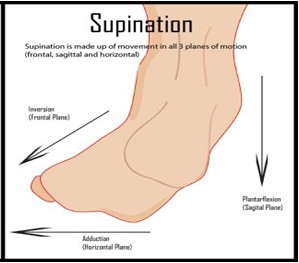
Using an ankle brace specifically designed for supination provides numerous benefits for individuals seeking to protect their ankles and maintain an active lifestyle:
- Injury Prevention: An ankle brace for supination significantly reduces the risk of ankle sprains and strains by limiting the foot’s outward rolling motion and stabilizing the ankle joint. It provides an extra layer of protection during physical activities, allowing individuals to participate in sports or exercises with confidence.
- Enhanced Support and Stability: The brace’s supportive design and compression features offer enhanced stability to the ankle, providing a sense of security and reducing the likelihood of accidental injuries.
- Pain Relief: Ankle braces for supination help alleviate discomfort associated with the condition by promoting proper foot alignment and reducing excessive strain on the ligaments and tendons.
- Increased Mobility: Despite the additional support, ankle braces for supination are designed to allow a reasonable range of motion, enabling individuals to engage in various activities without feeling restricted.
Why is Ankle Brace Best Therapy for Supination?
While ankle braces can offer valuable support and stabilization for individuals dealing with supination, it’s essential to consider them as part of a broader therapeutic approach rather than the singular best therapy. Ankle braces provide external reinforcement to the ankle joint, helping to minimize excessive outward rolling and reduce the risk of associated injuries such as ankle sprains. They offer a practical solution for immediate support and protection during activities that might exacerbate supination. However, the effectiveness of ankle braces is optimized when integrated into a comprehensive treatment plan that includes corrective exercises, footwear considerations, and professional guidance. The combination of these elements addresses the root causes of supination, strengthens supporting structures, and promotes long-term stability and overall foot health.
Conclusion

Ankle braces for supination are an excellent tool for individuals seeking to protect their ankles, prevent injuries, and maintain an active lifestyle. With their specialized design, these braces provide stability, support, and pain relief while allowing for adequate mobility. By investing in an ankle brace for supination, you can reduce the risk of ankle sprains, alleviate discomfort, and confidently pursue your favorite physical activities. Remember to consult with a healthcare professional to determine the most suitable ankle brace for your specific needs.
FAQ
- What is supination, and why is it important to use an ankle brace for supination? Supination refers to the outward rolling motion of the foot, which can cause instability and increase the risk of ankle sprains. Using an ankle brace for supination helps provide support and stability to the ankle joint, reducing the risk of injuries and promoting proper foot alignment.
- How does an ankle brace for supination work? An ankle brace for supination works by limiting the excessive outward rolling motion of the foot. It stabilizes the ankle joint and provides compression to promote proper alignment. Additionally, some braces offer arch support to counteract the high arches associated with supination.
- Can I wear an ankle brace for supination during physical activities? Yes, ankle braces for supination are designed to be worn during physical activities. They offer support, stability, and protection to the ankle, making them suitable for sports, exercises, and other active pursuits. However, it’s always advisable to consult with a healthcare professional to ensure the appropriate brace for your specific needs and activities.
- Are ankle braces for supination comfortable to wear? Ankle braces for supination are designed with comfort in mind. They are typically made from breathable and lightweight materials that allow airflow and prevent excessive heat and moisture buildup. Additionally, many braces feature adjustable compression straps for a customized fit, ensuring both support and comfort during extended use.
- Do I need a prescription to purchase an ankle brace for supination? In most cases, you do not need a prescription to purchase an ankle brace for supination. These braces are often available over-the-counter at pharmacies, sporting goods stores, and online retailers. However, if you have specific medical concerns or require a specialized brace, it is advisable to consult with a healthcare professional who can guide you in selecting the most suitable option for your condition.

